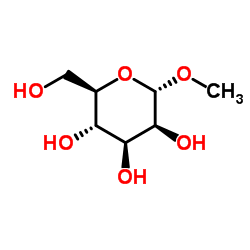Design, synthesis and biological evaluation of mannosyl triazoles as FimH antagonists.
Oliver Schwardt, Said Rabbani, Margrit Hartmann, Daniela Abgottspon, Matthias Wittwer, Simon Kleeb, Adam Zalewski, Martin Smieško, Brian Cutting, Beat Ernst
Index: Bioorg. Med. Chem. 19 , 6454-73, (2011)
Full Text: HTML
Abstract
Urinary tract infection (UTI) caused by uropathogenic Escherichia coli (UPEC) is one of the most prevalent infectious diseases. Particularly affected are women, who have a 40-50% risk to experience at least one symptomatic UTI episode at some time during their life. In the initial step of the infection, the lectin FimH, located at the tip of bacterial pili, interacts with the high-mannosylated uroplakin Ia glycoprotein on the urinary bladder mucosa. This interaction is critical for the ability of UPEC to colonize and invade the bladder epithelium. X-ray structures of FimH co-crystallized with two different ligands, the physiological binding epitope oligomannose-3 and the antagonist biphenyl α-D-mannoside 4a revealed different binding modes, an in-docking-mode and an out-docking-mode, respectively. To accomplish the in-docking-mode, that is the docking mode where the ligand is hosted by the so-called tyrosine gate, FimH antagonists with increased flexibility were designed and synthesized. All derivatives 5-8 showed nanomolar affinities, but only one representative, the 4-pyridiyl derivative 5j, was as potent as the reference compound n-heptyl α-D-mannoside (1b). Furthermore, a loss of affinity was observed for C-glycosides and derivatives where the triazole aglycone is directly N-linked to the anomeric center. A conformational analysis by NMR revealed that the triazolyl-methyl-C-mannosides 8 adopt an unusual (1)C(4) chair conformation, explaining the comparably lower affinity of these compounds. Furthermore, to address the druglikeness of this new class of FimH antagonists, selected pharmacokinetic parameters, which are critical for oral bioavailability (lipophilicity, solubility, and membrane permeation), were determined.Copyright © 2011 Elsevier Ltd. All rights reserved.
Related Compounds
| Structure | Name/CAS No. | Molecular Formula | Articles |
|---|---|---|---|
 |
Methyl α-D-mannopyranoside
CAS:617-04-9 |
C7H14O6 |
|
Synthesis of glycopeptide dendrimers, dimerization and affin...
2011-05-01 [Bioorg. Med. Chem. 19 , 2879-87, (2011)] |
|
Redox-responsive and calcium-dependent switching of glycosyl...
2005-06-02 [Bioorg. Med. Chem. Lett. 15 , 2707-10, (2005)] |
|
BK Virus replication in vitro: limited effect of drugs inter...
2007-12-01 [Antimicrob. Agents Chemother. 51 , 4492-4, (2007)] |
|
Towards a stable noeuromycin analog with a D-manno configura...
2012-01-15 [Bioorg. Med. Chem. 20 , 641-9, (2012)] |
|
Prevention of colonization of the urinary tract of mice with...
1979-03-01 [J. Infect. Dis. 139 , 329-32, (1979)] |